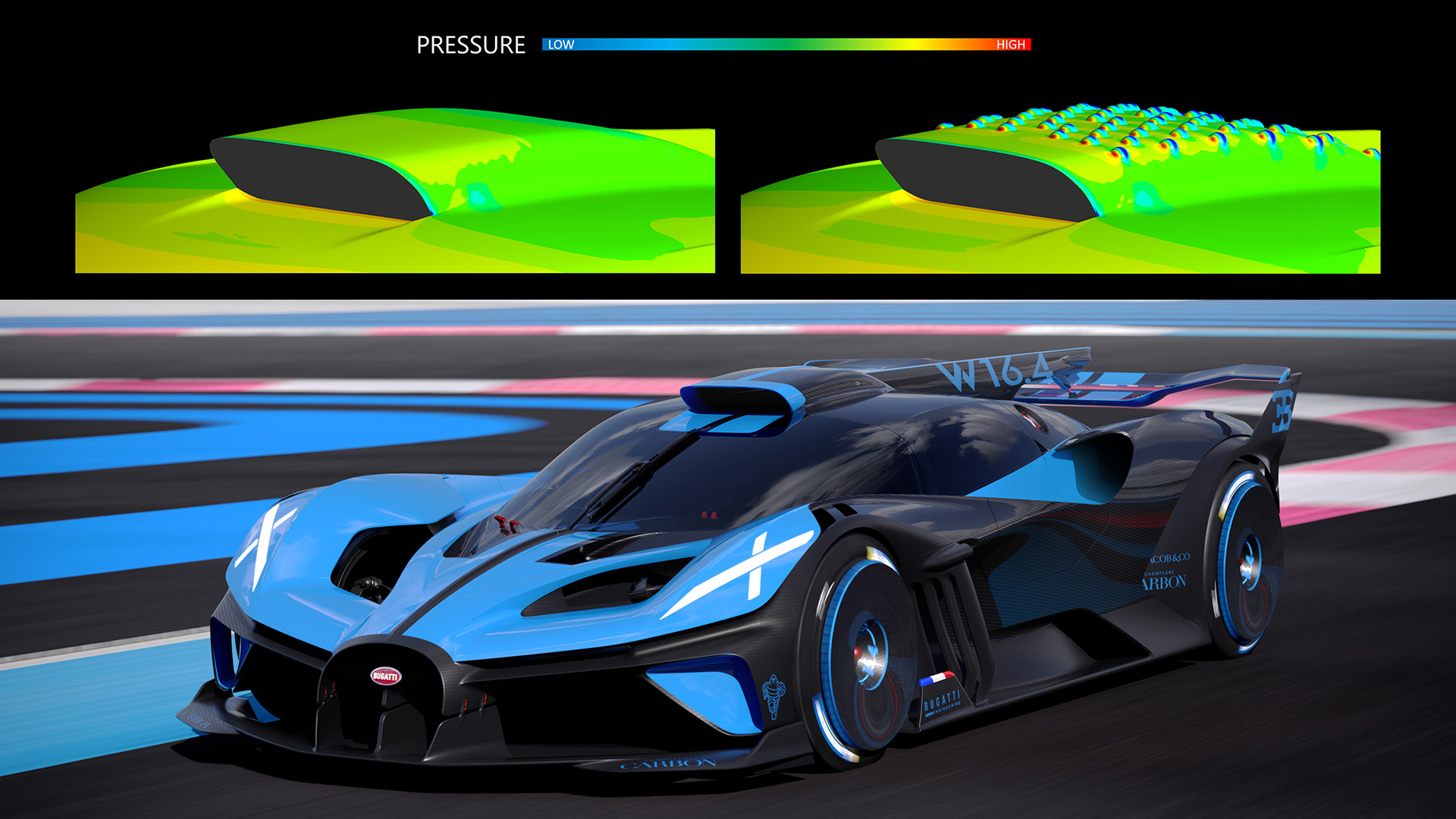

Bugatti’s latest concept—the ultra-lightweight, 1,825-horsepower Bolide—is the work of 27-year-old former intern Nils Sajonz. It’s also a functioning prototype so far only described by simulated stats, theories and wishful thinking. At the end of the day, an estimated Nürburgring lap time is completely meaningless. What’s not, however, is the innovations that Bugatti applied to the Bolide, including the now patent-pending “Dimple Airscoop” designed by young engineer Nils Ballerstein, who first had this idea in 2019 while working on his master’s degree thesis. Since the beginning of this year, Ballerstein has been preparing a doctoral thesis project to develop a special morphable outer skin for Bugatti—and this solution has now been used for the first time in the Bolide for its fancy airscoop.
With no scales in sight, Bugatti’s computers say that the theoretically 2,734-pound Bolide’s 8.0-liter quad-turbo W16 engine produces 1,823 horsepower on 110-octane racing gas, or 1,577 hp on readily available 98-octane. Theoretical top speed is well over 310 miles per hour, while a hot lap around the Nordschleife should take no longer than 5:23.1. That’s partly thanks to the active ram-air intake Nils Ballerstein came up with, which uses the same principle to manipulate the airflow as the surface of golf balls do.

Here’s how Bugatti describes it for all of us “non-scientists”:
“The dimples on the surface minimize air drag to such an extent that the ball travels about twice as far with the same impact force compared to an identical golf ball without the dimples. The dimples create turbulence on the surface of the golf ball so that air adheres better to the surface, thereby reducing the vortex flow in the slipstream of the ball and subsequently also the drag.”
Ram-air intakes are nothing new. These devices use the dynamic air pressure created by the motion to increase static air pressure inside the manifold and push more air into the combustion chamber. At speed, such a direct cold-air intake is what gives a car like the GMA T.50s 720 horsepower instead of the standard 700.
To end up with the Dimple Airscoop, Ballerstein first looked at Bugatti’s 3D-printed titanium brake calipers, which are water-cooled. The engineer added a dimple pattern inside the channels, which led to the fluid mixing better, dropping the temperatures. He then started wondering whether the same effect could be achieved with airflow instead of fluids.

On the Bolide, the morphable outer skin of the intake scoop on the roof is a world first from Bugatti. Sixty individual elements extend variably by up to 10 millimeters depending on the speed, on demand. Bugatti says that from about 50 mph upwards, air-resistance is the biggest enemy of efficiency, and these dimples can counter that, starting to function from as low as 75 mph.
Once again based only on simulations so far, the Dimple Airscoop can create 10 percent less drag than a passive smooth ram-air intake would, all while decreasing lift by 17 percent. Just as importantly, airflow to the rear wing is also optimized so that the Bolide can produce 3,970 pounds of downforce at the rear, and 1,760 pounds at the front at 200 miles per hour.



For tourist drives, the Nürburgring is open on certain days from 9 a.m until 4 p.m. For the Volkswagen Group, other time slots are available.
Got a tip? Send us a note: tips@thedrive.com